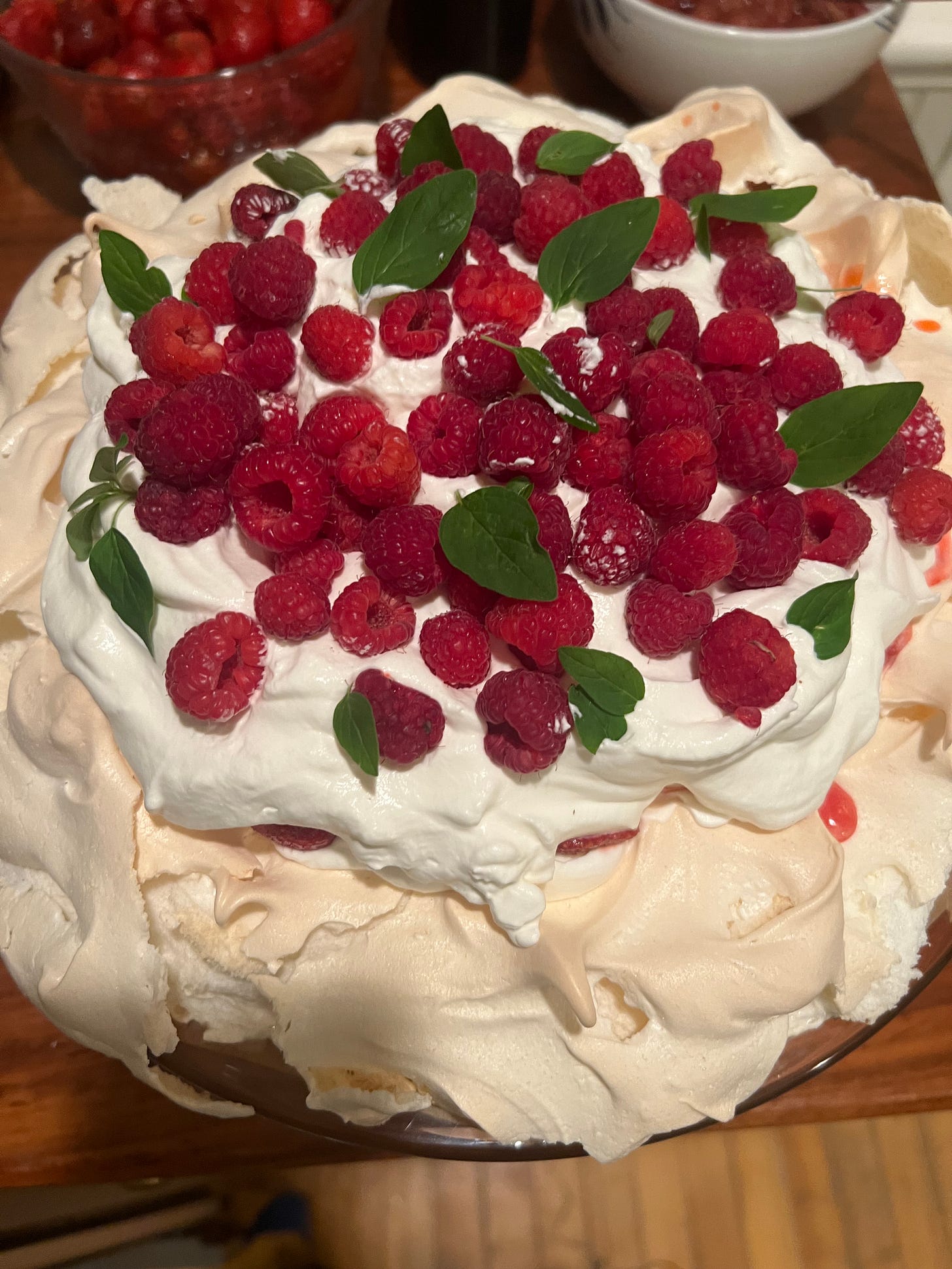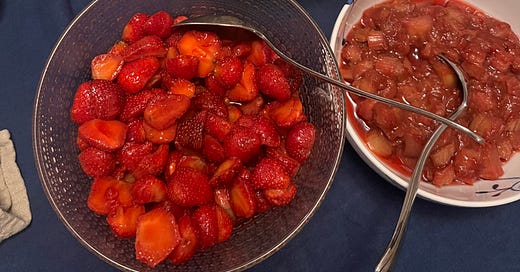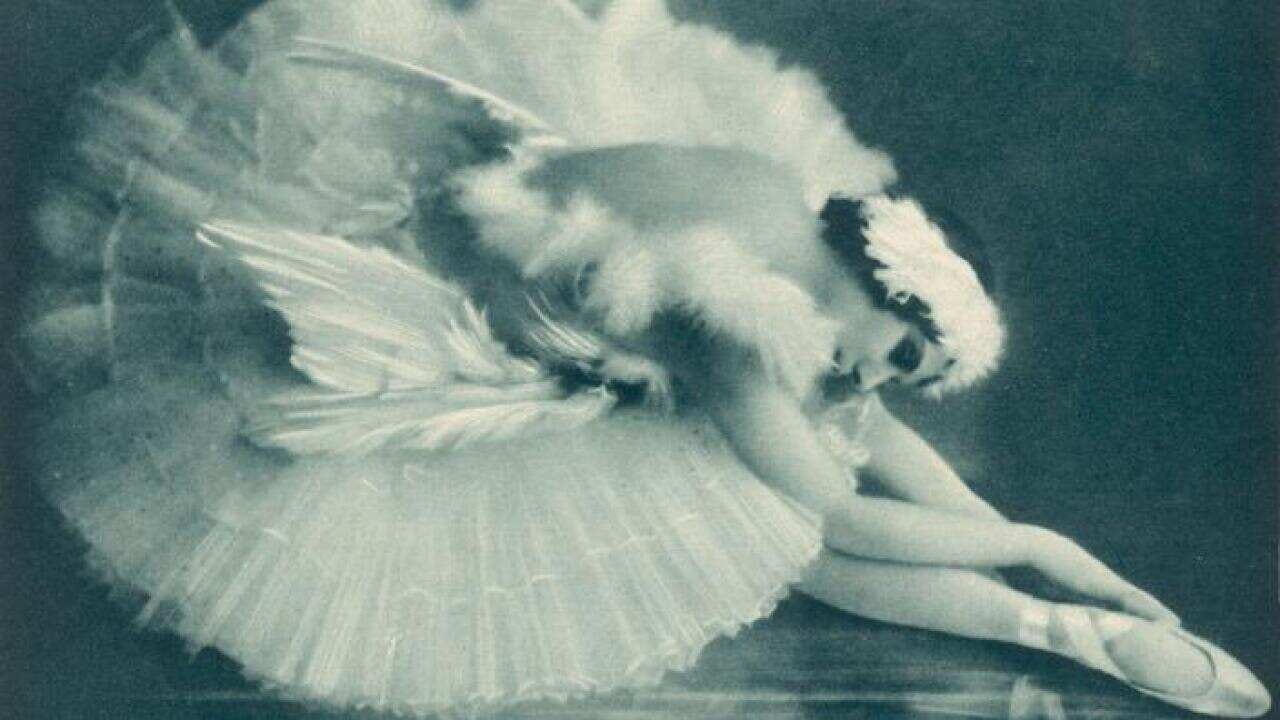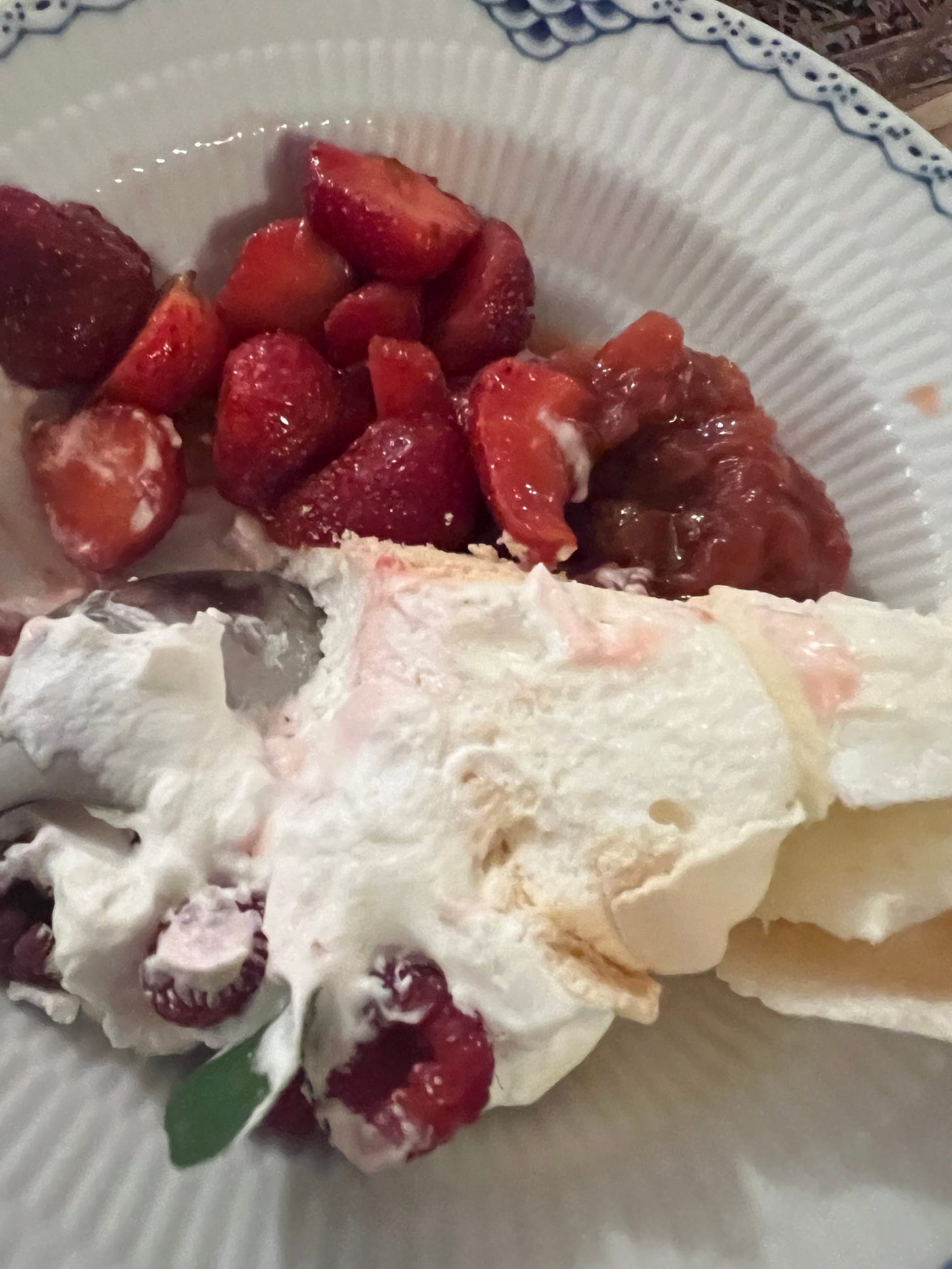Can you write about pavlova without wading into the dangerous antipodean waters of culinary genesis and appropriation? Both Australia and New Zealand lay claim to having invented this delicious meringue cloud of a dessert topped with fresh fruit and whipped cream in honor of the Russian ballerina Anna Pavlova, who toured through both countries in 1926. It is said to have resembled her costume in Swan Lake.
Both countries claim pavolva as their national dessert. Neither is happy about the other.
I visited New Zealand several years ago as part of a Cervena Venison press trip organized by my friend Jennifer. In preparation for that journey, I jotted down a list of must-try treats from my Kiwi friend Dorita. In addition to hokey pokey ice cream (vanilla studded with honeycomb candy) and Whittaker’s Peanut Slabs (chocolate bars studded with peanuts), Dorita told me to eat as much pavolva as I could find. I obliged. For me, it’s been an iconic Kiwi confection ever since.
Food historians have been battling out pav’s origin story for decades, citing recipes here, references there, and even similar types of meringue desserts that predate Pavlova’s visit elsewhere. As with most historical food challenges, we will likely never know who has the rightful claim. But that doesn’t make the dessert any less iconic and delicious.

In Maine last week for the Fourth of July holiday, we made our annual pilgrimage to Beth’s Farm Market in Warren, home to perhaps the best strawberry shortcake in the world. What makes it so good are the beautiful strawberries, which Beth’s is famous for, and their unforgettable unpasteurized heavy cream, which is less known but no less deserving of attention. I bought a couple of pints of each without a plan. In the kitchen later I realized that rather than a poor recreation of Beth’s shortcake, a pavlova wanted to be made.

One of the keys to making a great pavlova is getting the texture of the meringue just right. It should be crisp on the outside and chewy on the inside. The delightful contrast between the textures of the meringue and the whipped cream are part of what makes the dessert so good. Fresh berries, a little tart, are an ideal foil for the richness. It’s such a perfect combination.
I used my friend Bonnie’s foolproof pavlova recipe, iconic in its own right. Bonnie has been impressing people with her stunning pavlovas, often rolled like a jelly roll or served as giant slabs, for decades. Although I was going for a more traditional round shape, I knew her recipe was what I was looking for. (Later, as happens more times than pure coincidence would account for, I learned via Instagram that Bonnie had made a strawberry pavlova on the same night as I.)
Some Pav Advice
Pavlova is super easy and rewarding to make, but I know people are intimidated by egg whites. They are more forgiving than you’ve been led to believe. The hardest part may be separating the eggs. It helps if they are at room temperature because the whites let go a little easier and because you will get better volume when they are whipped. For safety, do them one at a time into a small bowl and then transfer the white into the larger bowl of your mixer with the others. If you get any yolk in the single white, you can remove it with a teaspoon or set it aside for breakfast.
Although I generally like to whip things by hand in the kitchen, you really want an electric mixer for this kind of meringue, which should be beaten at high speed for an extended period as you gradually add the sugar. Recently I’ve seen some social media pastry influencers claim that there’s no need to add sugar gradually to egg whites as they are beaten, that you can just dump it all in at the beginning and whip away. But I haven’t tried this yet myself so do so at your own risk. This kind of meringue is so stiff and glossy, and white when it’s finished, it makes me giggle. I love it!
You’ll want to sketch your desired pavlova shape on parchment so you don’t get carried away when spreading it out. Use a pot lid, baking pan, or bottom of a spring form or tart pan and a pencil to trace a 10-inch circle and flip it over in the pan before spreading out the meringue. If you have trouble releasing the baked meringue from the paper, just trim it to size and transfer it to a serving plate. The parchment will stay behind when you serve it.
Use any ripe, seasonal fruit alone or in combination. I like to macerate berries with some sugar and lemon juice so they give off a syrup that I drizzle on the pavlova. Have extra to serve on the side.
RECIPE: Berry Pavlova
Makes one large dessert, enough for 10 to 12 people
2 quarts strawberries, raspberries, blueberries, or a combination
2 cups sugar, divided
Juice of ½ lemon
8 egg whites
1 tablespoon cornstarch
1 tablespoon white vinegar
1 teaspoon vanilla, divided
2 cups heavy cream
2 tablespoons confectioner’s sugar
Fresh mint, for garnish
Set aside 8 to 10 perfect little strawberries and/or a handful of other berries to use later for garnish. Hull and slice the remaining strawberries into a large bowl. If using other berries, no need to slice. Sprinkle with ¼ cup of the sugar and a couple of tablespoons of lemon juice and toss. Set in the refrigerator to macerate for a couple of hours.
Meanwhile, preheat the oven to 275°F. Line a baking sheet with parchment. Trace a large circle on the parchment and flip it over.
Place the egg whites in the bowl of a stand mixer and begin to whip on high speed with a wire whisk. Add a couple of drops of lemon juice and continue whipping until soft peaks form. While continuing to beat on high, begin to add the remaining 1 3/4 cups sugar slowly to the egg whites, a few tablespoons at a time. The whites will become whiter and glossier as more sugar is added. Keep beating. When all but about 2 or 3 tablespoons of sugar is left to add, combine the remaining sugar with the cornstarch before tipping it all into the whites. Keep beating. Finally, add the vinegar and ½ teaspoon of the vanilla. Beat some more. The meringue should be thick and rich.
Spoon the meringue onto the center of the circle on your parchment, and using an offset spatula, spread and swirl it to make the desired shape. I like to leave a large impression in the center to hold the berries and cream later, like a giant bowl. When you are satisfied with how it looks, set the tray in the preheated oven. Bake for 50 minutes, then lower the heat to 225*F and bake another 30 minutes longer. Remove from the oven, set the pan on a rack, and cool completely.
When ready to serve, combine the heavy cream with the confectioners sugar and the remaining 1/2 teaspoon of vanilla and whip until thick but still soft. Trasfer the cooled pavlova to a serving platter. If you can’t pull off the parchment easily, trim it to fit. Spread a thin layer of whipped cream in the bowl of the pavolva. Spoon some of the macerated berries on top and drizzle on that some of the syrup that has accumulated. Mound the rest of the whipped cream over the berries. Garnish with the reserved fruit and mint, and serve with any remaining berries. On the plate, pavlova more or less becomes Eton mess, which is itself decidedly moreish.






